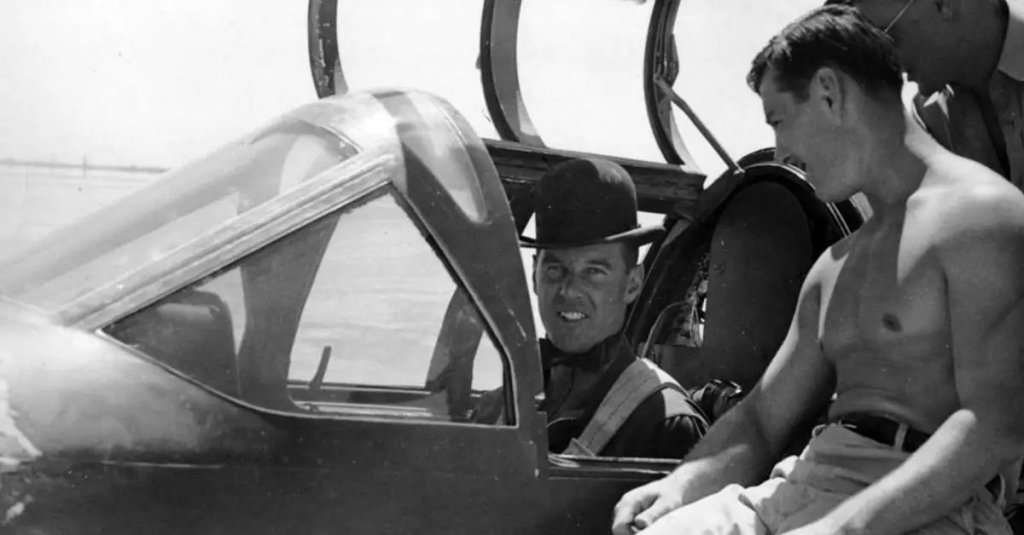Edwards Air Force Base in California certainly has its fair share of oddball aircraft and eccentric pilots. But a test pilot flying a top-secret airplane in a gorilla suit?
In 1942, Bell aircraft was developing its P-59 Airacomet, the first jet engine fighter designed by the United States. And although it never saw action, it was an important step in the development of U.S. air power.
It was also a top-secret project at the time. The British had a jet fighter airframe in development since 1941 as did the Nazis.
It was so secret, in fact, that when the P-59 was taxiing, airmen put a fake wooden propeller on her nose so onlookers wouldn’t notice anything odd about the aircraft.
In the air, however, it was a different story. Test pilots flying the usual piston-driven aviation engine would report back to base with sightings of a fast-moving plane without a propeller. They also said the plane was flown by a “gorilla, wearing a derby hat, waving a stogie at them.”

The Chief test pilot for Bell Aircraft was Jack Woolams. By the time Bell was testing its P-59 design, Woolams had already served 18 months in the Army Air Corps. He was the man behind the gorilla mask.
Other test pilots who were exposed to Woolams’ prank were convinced by Air Force psychologists that they hadn’t really seen the gorilla flying the plane, “because everyone knows you can’t fly without a propeller.”

Woolams was also the first test pilot to fly a fighter aircraft coast-to-coast nonstop and set an altitude record in 1943. Woolams died preparing for an air show in 1946, but he was a man ahead of his time — a harbinger of the nonstop, record-breaking, years of air power development to come for test pilots in the 1950s and 1960s.



